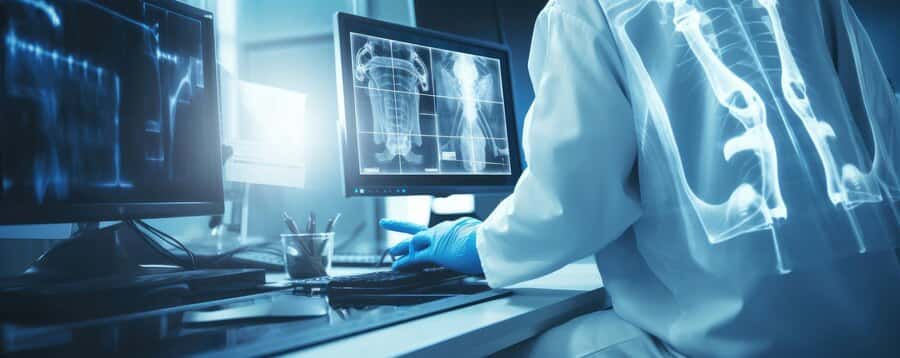
Home » Digital X-Rays: Recent Development in Radiography

Digital radiography, sometimes known as digital X-ray, is a medical imaging revolution that uses X-ray sensors to digitally enhance, edit, or transmit pictures over long distances. In contrast to traditional photographic film, digital X-rays quickly transform images into digital information, allowing for fast examination. Digital X-rays significantly cut the costs associated with processing, interpreting, and storing traditional photographic film, promoting the broad adoption of patient scans among medical facilities. Flat-panel detectors (FPDs) and high-density line scan solid-state detectors (HDLSSDs) are the principal image-capturing devices used in this technology.
Usages:
Beyond standard radiography, digital x-ray technology is being integrated. Digital radiography is used by computer programs, such as computerized axial tomography (CAT scan) programs, to create 3-D pictures. Magnetic resonance imaging (MRI) also uses digital X-rays to generate digital bone structure pictures, which are used to diagnose structural defects. The ability of digital x-ray equipment to permit digital picture archiving, allowing convenient access to patients’ records, is driving its adoption in hospitals. Digital detectors and imaging equipment have dominated advancements in digital X-ray technology throughout the generation, processing, archiving, and display activities.
Basic Methods:
The two basic methods are computer radiography (CR) and direct radiography (DR). CR captures and creates digital images quickly using image plates with photostimulable crystal layers, with continual advances improving storing phosphor systems. DR, on the other hand, generates digital images for storage using direct and indirect conversion processes.
Conclusion:
In conclusion, the coming years, expect an increase in technological advancements in digital radiography, driven by the widespread adoption of digital X-ray technology in various diagnostic procedures across medical institutions. The benefits of digital radiography are numerous, especially for healthcare professionals looking for real-time images for diagnostic purposes. This study discovered new advancements in digital X-ray technology and their potential impact on scanning efficiency.
Ms. Nisha Dagar
Assistant professor
School of Basic & Applied Sciences
October 10, 2023RECENT POSTS
CATEGORIES
TAGS
Agriculture Agriculture future AI Architecture artificial intelligence Bachelor of Commerce BA English BA Psychology BTech AIML BTech CSE BTech Engineering Business management career Career-Specific Education career guide career option career scope Civil engineering commerce and management Computer Science Computer science engineering Data science degree education Engineering Engineering students English Literature english program Fashion Design Fashion design course Higher Education Journalism journalism and mass communication law Law career Machine Learning Master degree mathematics MBA MBA specialization Mechanical Engineering Pharmacy Psychology Research and Development students
University Address: Nachauli, Jasana Road, Faridabad, Haryana
For Admissions :
Toll Free: 1800-120-4613
Mobile : 8447744303 | 8447744304 | 8447744306 | 8447744309
8700003974 | 8700003411 | 8700003749
Address: C-72, Second Floor, Shivalik, Near Malviya Nagar,
Above HDFC Bank, New Delhi 110017
Landline No. - 011-46570515 / 45138169 / 41755703
Mobile No. - +91-7303152412 / +91-7303152420 / +91-9311321952
Jagmani Kutir, Ground Floor, Road No-1, Rajeev Nagar,
Near Darbar Marriage Hall, Patna-800024, Bihar
Contact No: 9818352069/ 8130120095
Mail: kanhaiya@lingayasvidyapeeth.edu.in
Copyrights © 1998 - 2025 Lingaya's Vidyapeeth (Deemed To Be University). All rights reserved.
It is important to note that the following email IDs and domains are fraudulent and do not belong to our university.
LV only conducts physical/online verification of any document related to examination on the following email id: